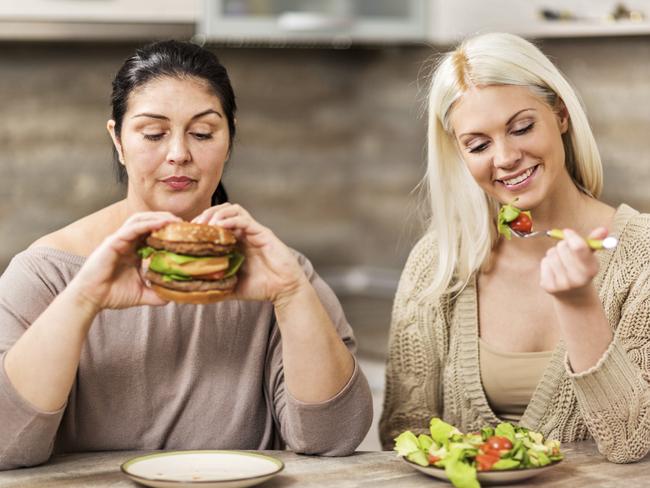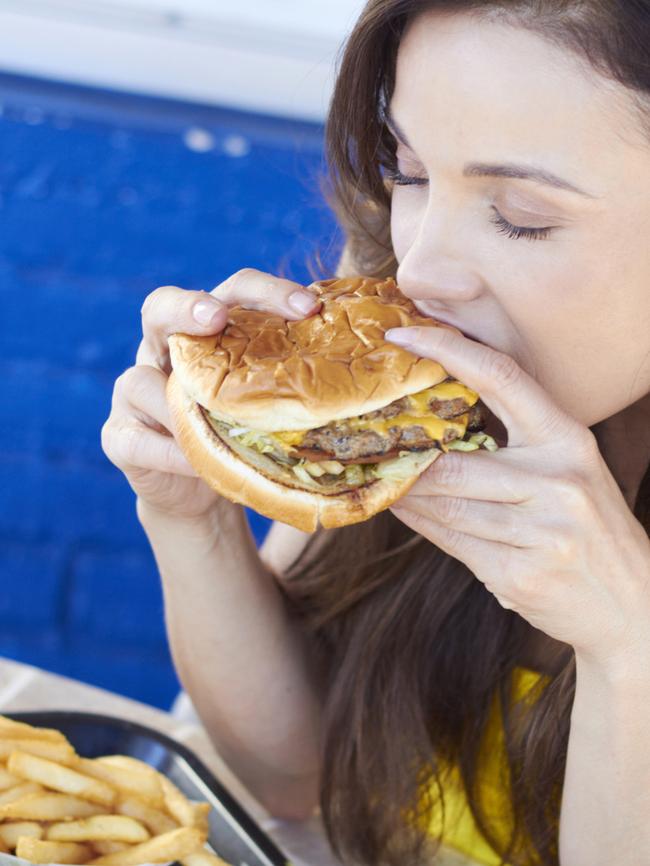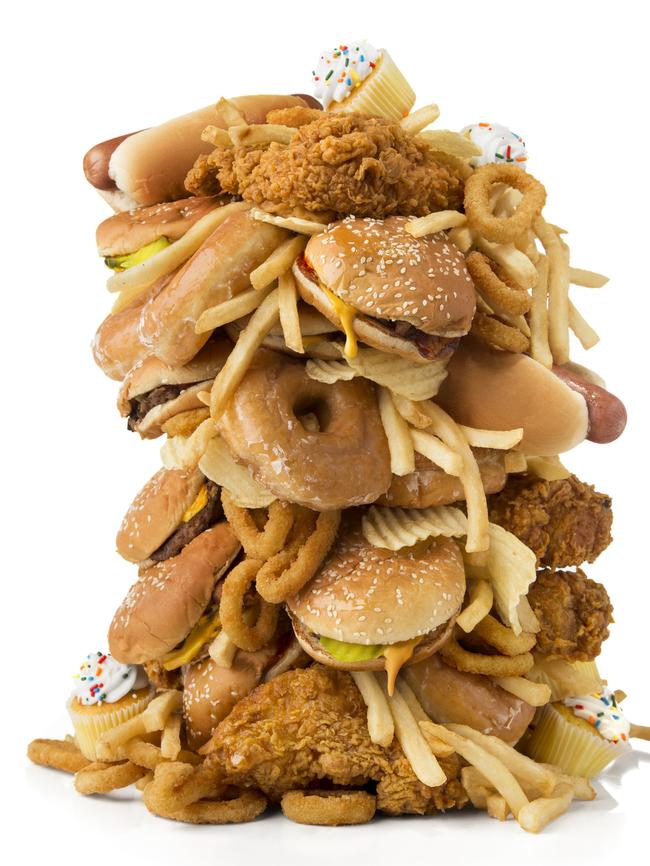Why Australia should restrict TV marketing of junk food ads targeted at children
AN AUSSIE child will watch 1100 junk food ads on TV this year. While the UK has taken steps to restrict marketing unhealthy food to children amid an obesity epidemic, is it time for Australia to follow suit?

Health
Don't miss out on the headlines from Health. Followed categories will be added to My News.
- Blood test dinner parties coming to a house near you
- Boost your brain power: Eat your way to a better mind
IT’S a given that most kids will choose doughnuts and chips over apples and carrots. But would that change if the food ads they saw were different?
Would less junk food advertising on buses, billboards and TV screens make a dent in childhood obesity rates?
For London’s mayor Sadiq Khan, the answer is a definite yes. He made headlines in May when he announced plans to ban junk food ads on London’s entire transport network.

It’s an unprecedented move, and one he states was necessary to curb the “ticking time bomb” of child obesity.
The rates of child obesity in the UK are among the highest in the world — the government reports that one in three children is overweight or obese. But Australia isn’t that far behind, with one in four children affected, and those numbers steadily increasing.
Chef-turned-healthy-food-advocate Jamie Oliver is leading the charge to change the UK’s regulation of junk food ads — he’s calling for them to be banned on TV until after 9pm, as well as tighter online controls.
He tells body+soul that he’d like to see other countries, like Australia, follow suit.
“Advertising is effective — why else would companies spend billions of pounds on it?”
he says.
“Advertising entertains, entices and makes us want to purchase. So how come we’re being enticed with high-fat, sugary, salty food so much more than anything else? The balance seems all wrong.”
It’s not about stopping big brands from advertising, Oliver says, but controlling the time and place in order to protect children.
“If we had to start again, what food would we advertise to kids?” he asks.
“Imagine if kids watched TV shows and saw beautifully crafted ads that made their health, wellbeing and joy for life a priority.”
STATE OF A NATION
RIGHT now in Australia, there are rules restricting the way junk food is advertised to children (such as TV ads offering free toys, misleading nutritional information or endorsements by popular people/characters), but there are no hard and fast laws about the volume of junk food ads kids are exposed to.
And it shows: A recent study by The University of Adelaide found that Australian children are exposed to twice as many unhealthy food advertisements as healthy food commercials. During their prime-time viewing alone (on average 80 minutes between 6-9am and 4-9pm), five to eight-year-olds were estimated to be exposed to 1100 junk food ads yearly, amounting to almost six hours per year, the researchers discovered.

It’s a situation that urgently needs to change, says Alexandra Jones, who leads the program on regulatory strategies to prevent diet-related disease at The George Institute for Global Health in Sydney.
“Advertising plays an important role in promoting unhealthy eating habits, influencing the brands that kids choose or pester their parents to buy,” Jones says.
“Children are particularly vulnerable because they can’t distinguish between what’s advertising and editorial or entertainment content.”
The UK has long been a leader in the area of regulating kids’ exposure to junk food marketing, Jones says, and initiatives like a public transport and pre-9pm TV ban are “desperately needed” here.
But Dr Geoffrey Annison, deputy CEO of the Australian Food & Grocery Council, doesn’t believe more ad regulations are necessary.
“[In addition to government regulations], the food industry has put in place restrictions on advertising certain products, based on their nutrient profiles, during children’s TV programs,” Annison says.
“However, it’s the responsibility and good judgment of parents that determines what their children see during other programs.”

These self-regulatory codes are voluntary and only apply to shows ‘where the audience is comprised of at least 35 per cent children’.
But the problem, argues Jones, is this leaves a lot of ‘child-friendly’ shows out of the mix.
“Far more kids are watching shows like MasterChef and sports that are filled with unhealthy ad breaks. The industry knows all too well how to exploit the loopholes in these codes to maximise their audience,” she says.
This was outlined in a study last year by Cancer Council NSW and The University of Sydney. Even with government and self-regulatory initiatives, kids were still exposed to the same amount of unhealthy food and drink ads as they were six years ago.
PARENTAL CONTROL NEEDED
THERE’S no question that children are vulnerable to the power of advertising, but would tighter restrictions actually achieve the desired effect on obesity rates?
Childhood fitness expert Jack East, whose exercise and healthy living programs run in schools around Australia and the US, says ad regulation is only a small part of the problem.
“I wholeheartedly support Jamie Oliver’s campaign goal,” East says.

“However, I don’t believe that a ban on junk food advertising will be particularly effective, or that it should be a priority as far as the objective of this battle goes.”
East feels that parents are by far the number-one influencers on a child’s weight.
“As adults, we know what’s right and what’s wrong. While diet and nutrition is a complex issue, we understand that a healthy diet doesn’t include junk food,” East says.
“It’s the parents and guardians who stock the fridge that must take responsibility for what their children eat, and the subsequent effect those foods will have on their bodies.”
Jones agrees that the causes of obesity are complex and that parental influence is a big factor, along with genetics, education, and urban planning.
“But that shouldn’t stop us from acting on easy issues that will make a difference,” she says.
“It’s much easier to change marketing messages than an individual’s genetics.”
For Jamie Oliver, such changes are necessary to improve the messages that parents, and society as a whole, send to kids about the value of healthy food.
“We need to create a food environment for kids — on TV, online and offline — that allows them to flourish,” he says.
“And what an amazing role advertising could play in that!”
THE GLOBAL WAR ON JUNK
Nations leading the fight against unhealthy ads

CANADA
In 1980, Quebec introduced an advertising ban on toys and fast food aimed at children under 13.
CHILE
Chilean law restricts advertising targeting those under 14 with foods high in calories, fat, sugar and/or sodium.
NORWAY
The government restricts all advertising directed specifically at children and there are also hefty taxes (83 per cent) on sugary drinks and confectionery.
UK
A ban on ads for food high in fat, sugar and/or salt that target children became law in 2006. A tax on drinks with more than 5g sugar per 100ml was enacted this year.
